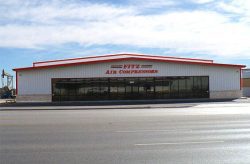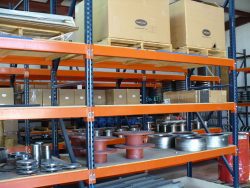What is a Torque Converter and How Does It Function?
If you’ve noticed your vehicle consuming more fuel than usual—a full tank once lasted over a week, but now you find yourself refueling in just a few days—it might be time to check your torque converter. This issue in vehicles is a common example of how a failing torque converter can impact efficiency. Similarly, in industrial settings, torque converters play a crucial role in the operation of heavy machinery. Just as in vehicles, a malfunctioning industrial torque converter can lead to increased operational costs and reduced efficiency.
For a detailed assessment or to learn more about how industrial torque converters can optimize your operations, visit our Contact Us page or call us directly at 888-220-3489.
But what is a torque converter?
In this blog, we will go over the following questions:
- What is a torque converter?
- What does a torque converter do?
- How does transmission fluid get into the torque converter?
- Is the torque converter part of the transmission?
- What happens when the torque converter goes out?
What Is a Torque Converter?
Before all else, let us first define a “torque.” So, to help you understand better, think of those wind-up toys you had played with as a child.
Torque is the potential energy you build when you wind up or twist those toys—a wind-up toy car that immediately rolls forward after you pull it backward functions on torque power.
Turning your engine’s crankshaft produces torque power in a car or truck, allowing you to accelerate.
For a manual car or truck, a clutch connects its engine to its transmission. Without a clutch connection, a vehicle can not reach a complete stop without killing its engine.
Automatic transmission vehicles, however, do not use this type of connection; instead, they have this powerful device called a torque converter.
A torque converter is a device that connects the power source to its load, ultimately what makes an automatic transmission vehicle move. It is a kind of fluid coupling that shifts rotating energy from a vehicle’s prime mover, making it a vital part of a vehicle.
Now, let us further look into how a torque converter works.
What Does a Torque Converter Do?
To discuss how a torque converter functions, we will look at some of its five main parts—the turbine, the impeller, the stator, the clutch, and the fluid.
The impeller is a part that resembles a fan because of its tilted blades. It spins when the engine mechanically turns it; the impeller then moves transmission fluid through its blades; the quicker it turns, the faster the liquid moves.
As the transmission fluid leaves the impeller blades, the liquid then moves into the next piece, which is the turbine.
A turbine is a closely matching blade piece found opposing the impeller. The transmission fluid hitting the turbine’s angled blades drives it to start spinning, turning the pump and transmission shaft in your vehicle.
The transmission fluid then is redirected through the turbine’s center, hitting the impeller once again.
The stator then comes into play; the stator is sitting in the torque converter’s center—another succession of fan-type angled blades. Its blades are angled, so when the fluid flows through them, it reverses direction.
As the stator holds the transmission fluid, it turns in the opposing direction of the engine, preventing the fluid from hitting the torque converter’s housing and slowing it down.
Speaking of the housing, you will find that the torque converter also has a housing attached to the engine with the impeller.
One of the stator’s vital roles is to help the torque converter function more efficiently.
As it redirects the transmission fluid that came off the turbine, the stator then harvests that kinetic energy to return into the cycle, allowing the converter to multiply torque power for greater acceleration.
However, the torque converter will not function at 100 percent efficiency until lock-up happens, which brings us to our last component.
Most torque converters use a lock-up clutch to lock the turbine and impeller together at high speeds, essentially improving vehicle fuel efficiency.
For industrial torque converters, there are four primary components—pump, turbine, stator, and transmission fluid—which you should look into, especially if you need repair; read all about it here.
Importance of a Torque Converter
The torque converter is one of your car’s most important yet overlooked parts. It offers an elegant solution to a very complex problem: the efficient transference of torque without stalling the engine.
The torque converter uses fluid coupling and a series of clutches and turbines to keep the engine and transmission spinning independently. However, unlike a typical fluid coupling assembly, it uses transmission oil to drive the turbine to multiply torque and increase power to the engine.
Essentially, torque converters are what allow automatic transmission cars to work. In the past, these cars were terribly inefficient, jerky, and didn’t change gears very well, yet they were still quite expensive. With the existence of torque converters, modern transmission cars can now mimic the functionality of a clutch in manual transmissions while improving your car’s performance, fuel economy, and overall durability.
Torque Converter Phases
To better understand how a torque converter works, look at its three phases: stall, acceleration, and coupling.
Stalling
When stalling, the engine is still rotating or turning together with the impeller. The turbine, however, does not, so your vehicle is not moving.
Stalling happens when your vehicle’s engine is running, the transmission is in gear, but you have your foot on the brakes.
Acceleration
In acceleration, the torque accumulation power comes into play. As your engine’s revolution per minute (RPM) rises, the impeller begins moving faster, causing the turbine to move faster.
At this point, the impeller is turning more rapidly than the turbine.
Coupling
Coupling happens when you drive at even higher speeds. Unlike during acceleration, the turbine and impeller nearly turn at similar speeds during coupling.
As mentioned, this is also when some torque converter models lock the two—impeller and turbine—together with a clutch to further improve efficiency.
In this phase, the stator mostly does not take part since, at higher speeds, the fluid already moves in a way that will not risk hitting the housing because that is when it slows down.
How Does Transmission Fluid Get Into the Torque Converter?
The functions performed by the torque converter are made possible by the transmission fluid inside it. The fluid enters the torque converter through a pump, which sends the fluid around the device, depending on the rotation of the crankshaft. Inside the housing lies a turbine that rotates as the pumped fluid comes into contact with the turbine vanes, which helps gauge the amount of torque that gets to the transmission through the input shafts.
Is the Torque Converter Part of the Transmission?
The torque is a major part of what makes automatic transmission possible. Because of this, it is often considered part of the transmission itself. But in truth, it is actually a separate entity that serves three main functions:
- It is responsible for transferring engine torque to the transmission through the action of the transmission fluid.
- It multiplies the engine torque, dramatically improving the vehicle’s road performance.
- It provides direct-drive capabilities, a mechanism design where the force or torque is transmitted directly to the engine through the transmission liquid.
Common Torque Converter Problems
While some ways a torque converter may break down are minor, some can be dangerous. For instance, if a converter is experiencing a high level of slippage continuously, that can cause overheating—ultimately damaging the elastomer seals that hold the transmission fluid.
For industrial torque converters, here are signs that you may need service:
- Dirty fluid
- Overheating
- Shuddering or slipping
What Happens When Your Torque Converter Goes Out?
A failing torque converter should always be a cause for concern as it can lead to the following issues:
- Overheating
- Transmission fluid degradation
- Increased friction
- Vehicle damage
Many of the issues experienced by failing torque converters are caused by excessive friction, which causes the needle bearings to become damaged. They can also be caused by faulty seals that allow fluid to leak and become contaminated.
To know if your torque converter is damaged or deteriorating, watch out for the following signs:
- Frequent overheating
- Slipping or shift delay
- Shuddering even on smooth roads
- Unusual noises coming from the engine
- Increased stall speed
And for any of your torque converter needs, be it repair, parts, or a brand new industrial torque converter, check out Fitz Equipment.
Having been in service for 50 years, Fitz Equipment knows the importance of maintaining the integrity of your engine parts to ensure vehicle performance. With our broad range of products and equipment solutions, we ship your orders as soon as possible to reduce operational downtime and maximize profitability.
If you are looking for Alison Torque Converters, we got you covered. You can request a quote here, or for immediate assistance, call us at 888 220 3489.




